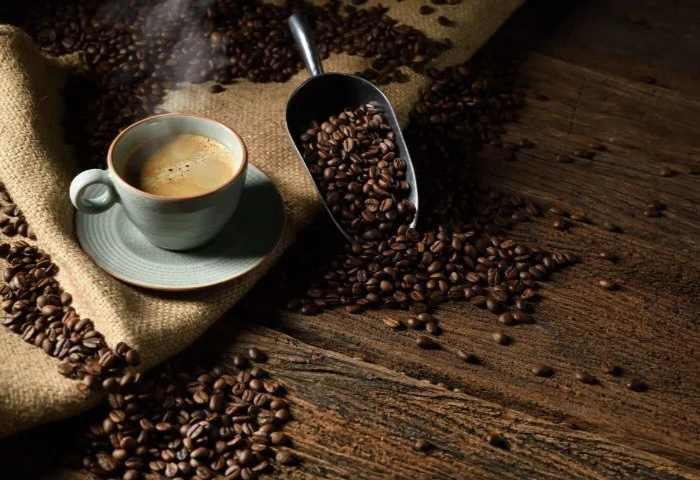Espresso is one of the most popular coffee beverages in the world. Its rich flavor and concentrated nature make it a favorite among coffee lovers. But a common question arises: is espresso served cold or hot? The answer is not as simple as it seems. This article explores the temperature of espresso, how it is brewed, and the variations that exist in serving styles.
The Basics of Espresso Temperature
Espresso is traditionally served hot. The brewing process involves forcing nearly boiling water through finely-ground coffee beans at high pressure. This results in a small, concentrated shot of coffee with a layer of crema on top. The standard serving temperature for espresso is between 160°F (71°C) and 185°F (85°C).
However, espresso can also be served cold. Iced espresso and cold brew espresso are modern variations that have gained popularity. These versions involve either chilling freshly brewed espresso or using specialized cold extraction methods.
How Espresso is Brewed
Understanding the brewing process helps clarify why espresso is typically hot.
The Role of Heat in Extraction
Espresso machines use heat to extract flavors from coffee grounds. The ideal water temperature for brewing espresso is between 195°F (90°C) and 205°F (96°C). If the water is too cold, the extraction will be weak and sour. If it’s too hot, the coffee can taste burnt.
Pressure & Temperature
Espresso machines apply 9 bars of pressure to push hot water through the coffee puck. This high pressure ensures rapid extraction, usually within 25 to 30 seconds. The combination of heat and pressure creates the signature bold flavor of espresso.
Serving Temperature of Espresso
Once brewed, espresso cools quickly due to its small volume. A standard shot is about 1 to 1.5 ounces (30 to 45 ml), meaning it loses heat faster than a larger cup of coffee.
Why Hot Espresso is Preferred
Most people drink espresso hot because:
- The flavors are more pronounced when warm.
- The crema (the golden foam on top) forms best at high temperatures.
- Hot espresso blends well with milk in drinks like lattes and cappuccinos.
When Espresso is Served Cold
Some coffee shops serve iced espresso, where a freshly pulled shot is poured over ice. Another method is cold brew espresso, which involves steeping coffee grounds in cold water for an extended period (usually 12-24 hours).
Variations of Cold Espresso Drinks
Cold espresso drinks have become popular, especially in warm climates. Here are some common types:
Iced Espresso
A shot of hot espresso is poured over ice, instantly cooling it. This method preserves some of the espresso’s intensity while making it refreshing.
Cold Brew Espresso
Unlike traditional espresso, cold brew is made without heat. Coarse coffee grounds steep in cold water for hours, resulting in a smooth, low-acidity drink. Some specialty machines now produce cold brew espresso, which mimics the concentration of hot espresso but with a different flavor profile.
Nitro Espresso
This is cold brew espresso infused with nitrogen gas, giving it a creamy texture similar to draft beer. It’s served chilled and often on tap.
Factors Affecting Espresso Temperature
Several elements influence whether espresso is served hot or cold:
Brewing Method
Hot Espresso: Uses high-temperature water and pressure.
Cold Espresso: Uses cold extraction or rapid cooling over ice.
Consumer Preference
Some people enjoy the intense warmth of a fresh espresso, while others prefer a chilled version, especially in summer.
Cultural Differences
In Italy, espresso is almost always drunk hot and quickly. In the U.S. and other countries, iced espresso drinks are more common.
The Science Behind Hot vs. Cold Espresso
The temperature of espresso affects its taste and chemical composition.
Flavor Extraction
Hot water extracts more oils and solubles from coffee, leading to a richer taste. Cold brewing results in a smoother, less acidic profile because fewer bitter compounds are dissolved.
Oxidation & Acidity
Hot espresso oxidizes faster, which can change its flavor if left sitting. Cold espresso retains its taste longer but may lack some aromatic complexity.
Common Misconceptions About Espresso Temperature
Espresso Must Always Be Hot
While traditional espresso is hot, modern variations prove that cold espresso can be just as enjoyable.
Cold Espresso is Just Watered-Down Coffee
Properly made iced espresso or cold brew espresso is concentrated and flavorful, not diluted.
How to Enjoy Espresso at Different Temperatures
Best Way to Drink Hot Espresso
- Drink it immediately after brewing.
- Use a preheated cup to maintain temperature.
- Sip slowly to appreciate the flavors.
Best Way to Drink Cold Espresso
- Use large ice cubes to minimize dilution.
- Stir before drinking to blend flavors.
- Add milk or sweeteners if desired.
Conclusion
So, is espresso cold or hot? The answer depends on how it’s prepared. Traditional espresso is served hot, but cold variations like iced espresso and cold brew espresso are equally valid. The choice comes down to personal preference, climate, and cultural habits. Whether you enjoy a steaming shot or a chilled glass, espresso offers a versatile and delicious coffee experience.
By understanding the brewing process and different serving methods, you can appreciate espresso in all its forms. Next time you order, consider trying both hot and cold versions to explore the full range of flavors this beloved drink has to offer.
Related topics:
How Many Grams of Coffee in a Nespresso Vertuo Capsule?
Buon Giorno Coffee: A Journey to Exceptional Espresso & Beyond
Where to Buy Gaggia Espresso Machines: A Complete Guide


